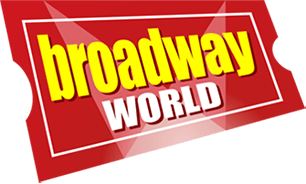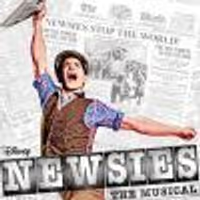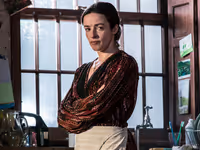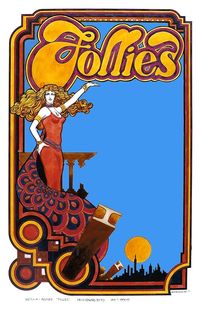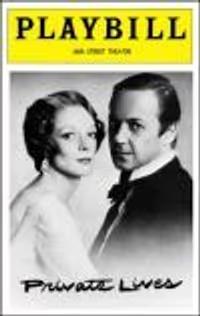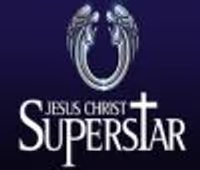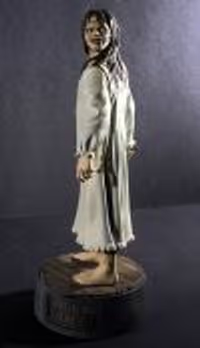Songs added to shows for technical reasons?
#25Songs added to shows for technical reasons?
Posted: 7/10/12 at 9:26pm"Your Timeless to Me"- Hairspray
#26Songs added to shows for technical reasons?
Posted: 7/10/12 at 9:35pmA teacher once told me that God That's Good was extended greatly to cover the chair descending from the top of the set. Not sure how true that is.
#27Songs added to shows for technical reasons?
Posted: 7/10/12 at 9:57pm
"Abbondanza" - THE MOST HAPPY FELLA
"Marry The Man Today" - GUYS AND DOLLS
"So Long, Dearie" - HELLO, DOLLY!
#28Songs added to shows for technical reasons?
Posted: 7/10/12 at 10:45pm
Some of my details might be a bit askew, but I'm pretty sure it's mentioned in the Titanic book that the act two scene with the men looking out the portholes and the reprise of "To Be a Captain" were written to accommodate the scene change taking place behind them. They had to go from the two story set up of the boat deck with the radio room below to the boat deck with the first class smoke room below and the crew worked it out that the scene and song would need to be six minutes long in order to accommodate the change. During previews before the scene was written there would be an announcement at the top of act two that there would be a pause in the action at that point.
Later, when they changed the ending, the creative team couldn't decide whether to use the scene with the survivors stepping forward and telling their survival stories or the reprise of "In Every Age" that Yeston had written. When the crew reported that it would, again, take another six minutes to get from the sinking deck back to the dock on sailing day from the top of the show they had no choice but to use both the scene and the song.
Updated On: 7/11/12 at 10:45 PM
#29Songs added to shows for technical reasons?
Posted: 7/11/12 at 12:07am
I can't source it, so I don't know whether it's true -- but I've heard informally and read several times over the years that Bianca in Kiss Me Kate was written because Harold Lang was contractually guaranteed a solo number. Porter didn't want to do it and allegedly deliberately wrote a bad song, thinking it would be cut in previews. (And to my mind it really is drivel, an embarrassment in the string of pearls that is the score to Kiss Me Kate.)
Lang, however, brought the house down with his dancing every night and the number stayed in.
Again, this is just ancient theater gossip and I have no idea whether it's true.
Updated On: 7/11/12 at 12:07 AM
#30Songs added to shows for technical reasons?
Posted: 7/11/12 at 2:05pm
What about "Dear Old Shiz" for Glinda's costume change?
I don't think so, as Glinda is in "Dear Old Shiz" Remember? "Glinda! Is it true you were her friend?" "Well, it depends on what you mean by friend. I did know her, that is, our paths did cross, at school". And at near the end of the song she sings "AhhhhAhhAhhAhhhhhAhhhAhhAhhhhhhhhhhhhhhhh"
#31Songs added to shows for technical reasons?
Posted: 7/11/12 at 2:40pm
"A little-known ditty called "There's No Business Like Show Business"."
Huh? Am I confused? I thought I'm remembering that song opens the show. What scene change could it have been covering?
#32Songs added to shows for technical reasons?
Posted: 7/11/12 at 4:03pm^ It did, in the 1999 revival. In the original, it didn't come 'til about the middle of the first act.
Broadway Legend
joined: 5/1/05
Blocked: After Eight, suestorm, david_fick, emlodik, lovebwy, Dave28282, joevitus, BorisTomashevsky, Seb28
Jon
Broadway Legend Joined: 2/20/04
#33Songs added to shows for technical reasons?
Posted: 7/11/12 at 4:11pm
"There's No Business..." originally came at the end of the ridiculously long first scene, after:
Colonel Buffalo Bill
Bad, Bad Man
Doin What Comes Natrurally
The Girl That I Marry
You Can't Get a Man with a Gun
Those first two songs were cut for the 1999 revival, and "No Business" became the opening.
Re King and I:
"Western People Funny" is the opening song of Act 2. How could it cover a scene change?
#34Songs added to shows for technical reasons?
Posted: 7/11/12 at 4:26pmLittle Lamb
"In Oz, the verb is douchifizzation." PRS
WOSQ
Broadway Legend Joined: 7/18/03
#35Songs added to shows for technical reasons?
Posted: 7/11/12 at 4:29pm
"There's No Business...etc" has been described as the best song that covers a scene change ever written. It actually starts at the end of that long first scene, the principals move down into one and a drop comes in and the song just goes on and on and the audience is none the wiser because it is such a good song.
Western People Funny has a backstory not unlike Bianca. Dorothy Sarnoff was contractually bound to have two songs, one in each act. Not content to call it a day with one of the most beautiful melodies ever written ever, she nagged R+H so much about the damn second song that they said, "You want a song in the second act. Okay, you'll get a song in the second act.", and proceeded to write the perfectly wretched Western People Funny for Lady Thiang. They then refused to cut it and made the Bitch Soprano sing it in the show every night and in the awful top of Two position no less.
It was not on the cast recording and was cut from the film and is often cut from other productions.
Be careful what you wish for.
Broadway Legend Joined: 12/31/69
#36Songs added to shows for technical reasons?
Posted: 7/11/12 at 4:42pmDriving Down the Strip- Dreamgirls
#37Songs added to shows for technical reasons?
Posted: 7/11/12 at 4:45pm
Thanks for the correction re Western People Funny. Martin Gottfried in his Broadway Musical books goes on at some length about how he thinks King and I is the most perfectly constructed show from Rodgers and Hammerstein or in the style they perfected and mentions it as one example of an element that could be cut but wrote that it was performed "in one" to hide a scene change--obviously he's wrong (wouldn't be the first time).
I wonder what songs were performed "in one" in King and I (I want to say A Puzzlement was one, which is a song that's pretty integral to the show). Judging from the televised version of the university recreation of Oklahoma! done last year it often was the charm songs (someone mentioned Her Is from Pajama Game and that's how we did it in high school, as well as the brief Jealousy ballet which I believe many revivals cut but I enjoyed because I got to be a dancing sailor hiding in a closet...). With Oklahoma! that means All Or Nothing (which in that production they even play with some aknowledgement of the audience), etc.
Jon
Broadway Legend Joined: 2/20/04
#38Songs added to shows for technical reasons?
Posted: 7/11/12 at 4:49pmThe "Puzzlement" reprise done by Louis and Prince Chulalonkorn is an in-one scene.
Buscee
Featured Actor Joined: 7/9/05
#39Songs added to shows for technical reasons?
Posted: 7/11/12 at 4:49pmI do not believe that TIMELESS TO ME, and ON THE STREET WHERE YOU LIVE were written to cover scene changes. Just because it is performed "in one" doesn't mean it is sole purpose is to cover a change. Especially nowadays with the excellent techniques now that speed up scene changes.
#40Songs added to shows for technical reasons?
Posted: 7/11/12 at 5:09pm
What about "Dear Old Shiz" for Glinda's costume change?
I don't think so, as Glinda is in "Dear Old Shiz" Remember? "Glinda! Is it true you were her friend?" "Well, it depends on what you mean by friend. I did know her, that is, our paths did cross, at school". And at near the end of the song she sings "AhhhhAhhAhhAhhhhhAhhhAhhAhhhhhhhhhhhhhhhh"
You do realize that she is absent for the majority of what you've just described? The actress races off stage, changes costumes and sometimes barely makes it back for her bit at the end of the song. I would say missthemountains is correct.
AEA AGMA SM
Broadway Legend Joined: 8/13/09
#41Songs added to shows for technical reasons?
Posted: 7/11/12 at 5:29pm
With the way shows were written and structured back in the day I would be willing to be that "On the Street Where You Live" was indeed written knowing full well that it would be serving as an in-one to cover the change from Ascot back to Higgins's study.
Many of the in-ones mentioned though were planned well in advance. It sounds like the examples cited from Titanic are some of the few that were actually written/added during tech based on how much time was needed, as opposed to starting tech saying "here's the song, here's how much time you have, make it work."
#42Songs added to shows for technical reasons?
Posted: 7/11/12 at 5:47pm
That's a good distinction, and, particularly for the older shows, I think you're right--often with those shows you can listen to them and almost tell right away that they were probably written (from the get go) to help with an in-one scene change.
I've always been curious about the already mentioned The Rumour for Fiddler--wasn't Jerome Robbins' staging pretty seamless without such scenes (as many shows already were--like his West Side Story, and I remember reading even Josh Logan's original production of South Pacific worked hard to get rid of in-one scenes, which probably even back then seemed a bit clumsy).
#43Songs added to shows for technical reasons?
Posted: 7/11/12 at 6:38pmWhat about songs cut from revivals not so much because of time, or other issues, but due to technological improvements. While Show Boat seems to have a different version everytime it's revived, I heard that Till Good Luck Comes my Way (a song I love) was cut from the 1940s revival (maybe even from the 1932 brief return engagement) because it was thought solely to be there for a scene change, and was no longer needed. I imagine that may have been the reason Highest Judge (another song I love...) was cut from the Hytner revival of Carousel.
#44Songs added to shows for technical reasons?
Posted: 7/11/12 at 6:39pm
Not to threadjack, but:
Hey, justoldbill, I just saw "Night They Raided Minski's" and, if you listen to the music they play during the striptease, Adams later used it for the song "Greenhorns" in "Rags".
Like Buscee says, just because a song is performed "in one" because of staging logistics doesn't mean it was written as a costume/set change song.
"Somebody Somewhere" in "Most Happy Fella" ends up as being done "in one" but it's the character's "I Want" song.
#45Songs added to shows for technical reasons?
Posted: 7/11/12 at 6:59pmSorry if this is common knowledge in the biz, but what does "in one" mean? I tried googling it but google was stumped.
#46Songs added to shows for technical reasons?
Posted: 7/11/12 at 7:11pmIn this case it means the often used, but now old fashioned technique of doing a scene downstage while a curtain, often with a simple backdrop falls so that the main set can be changed while the audience is (hopefully) distracted with a usually smaller scene or song done in front of the curtain.
#47Songs added to shows for technical reasons?
Posted: 7/11/12 at 7:13pmIt's become used less and less (in fact, it's not used in such an obvious way in any major productions I can think of now) as both more scene changes have been automated or can be done quicker, and as directors have become more focused on "cinematic" scene transitions (think the obviously cinamtic ones of Jerome Robbins, Hal Prince, Bennett, Trevor Nunn, etc). There also seems to be less of a worry about audiences seeing the scene go on and off stage.
#48Songs added to shows for technical reasons?
Posted: 7/11/12 at 7:14pmUgh, my browser is f ucked today apparently. I always assumed it was called "in one" because when the number of acts and scenes are counted, these short scenes are not usually numbered as individual scenes.
#49Songs added to shows for technical reasons?
Posted: 7/11/12 at 7:46pm
I thought the term "in one" came from vaudeville, but according to this page, it goes back even farther, to the days of minstrel shows:
"In One — An act or routine that works in the six-foot area between the footlights and the closed main show (number one) curtain. An act that needed that area plus the next six feet was "in two" since that area was in front of the number two curtain, and so on up to "full stage." While various theaters' stage dimensions might vary a bit, these specifications were standard ways of describing an act's space requirements, and were a primary consideration in planning the practical flow of a full program.
....
"The "second part" was a series of specialty acts "in one" (played mostly in the front six feet of stage before the closed olio curtain). It would not be thought complete without a 'stump speech', a satirical monologue full of bumpkin malapropisms, jokes and puns, in a setting simulating a tree stump where people might pause to chat during a break from plantation work.
....
"Olio Acts — Smaller numbers or acts performed "in one" during set changes for the major acts of the show. 'Olio' derives from 'oilcloth,' meaning cloth treated with oil or paint. The "olio drop," often painted with advertising for local businesses, hung 6 to 10 feet back from the footlights. Simple specialty acts would perform in front of the "olio drop" while the stage was being set for the next major act. Such acts might be called for with ads such as: "Wanted: Acrobatic, juggling, and other novelty acts, to work in olio." "
http://www.goodmagic.com/carny/vaud.htm
Updated On: 7/11/12 at 07:46 PM
Videos
